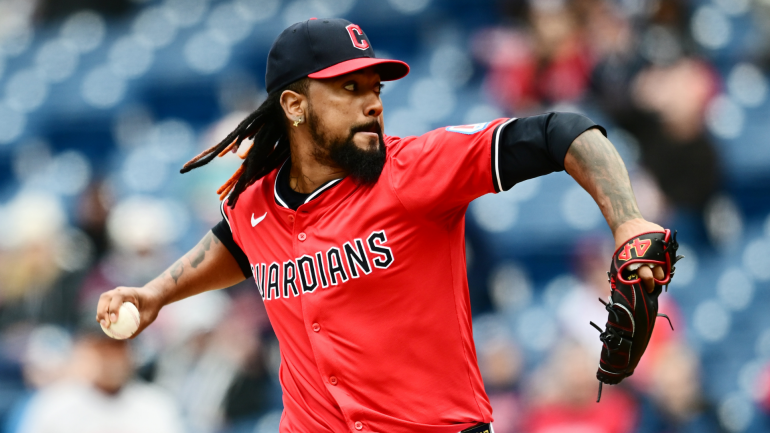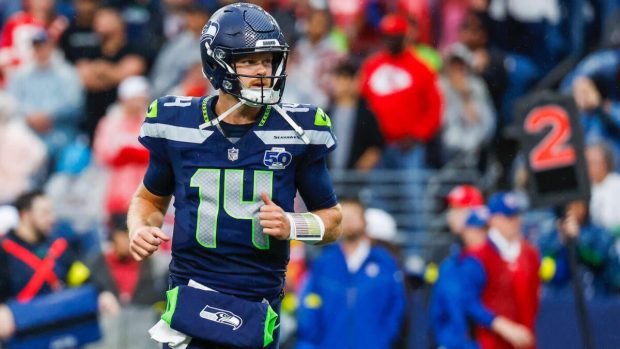

The first month of the 2025 MLB regular season is in the books and things are beginning to look normal, for lack of a better term. Only one qualified hitter (Aaron Judge) is hitting over .400 and just a handful of starters have a sub-2.00 ERA. Contenders that started poorly are getting hot and pretenders that started well are coming back to Earth. With the season nearly 20% complete, here are three trends worth keeping an eye on as we head into May.
Clase’s cutter problem
It’s a bad year to be a top flight closer. Devin Williams has struggled so much that the Yankees demoted him. Ryan Helsley is walking almost a batter an inning. David Bednar got sent to Triple-A. Raisel Iglesias can’t keep the ball in the park. Edwin Díaz has rarely had a clean inning. Every closer except Mason Miller and Andrés Muñoz seems to walk a tightrope these days.
Among the struggling closers: Emmanuel Clase, who had a historic 2024 season that saw him throw 74 ⅓ innings with a 0.61 ERA and 0.66 WHIP, and finish third in the AL Cy Young voting. Entering play Tuesday, Clase had already allowed almost twice as many earned runs this year (nine) as last year (five), and opponents were hitting an unfathomable .400/.429/.580 against him.
Clase blew a three-run lead against the Pirates on April 20 and was removed from the closer’s role. Cade Smith, who was electric as a rookie last season, has taken over ninth-inning duty. On April 26, Clase pitched the eighth inning and Smith got the save in the ninth. Surely the Guardians want to return Clase to the closer’s role at some point, but, right now, Smith is the better option.
“He was Clase. It was great,” Guardians manager Stephen Vogt said after Clase’s setup appearance on April 26 (via the Akron Beacon Journal). “… (I told him I will) probably look for a little lower leverage just to get you back on your feet. And he was great with it, and that’s the teammate he is, and he’ll be right back in that closer role.”
Some of Clase’s issues can be chalked up to small sample size noise. He’s allowed a .457 batting average on balls in play, which is astronomical and not something that will continue long-term. Clase entered 2025 with a career .248 BABIP and the league average is a .288 BABIP. It’s reasonable to expect Clase’s BABIP to come down and approach his career average at some point.
At the same time, Clase has changed his approach to some extent. The cutter specialist is pounding the glove-side half of the plate (away to righties and in on lefties) with his cutter after using it to both sides of the plate last year and throughout his career. Here are the heat maps of his cutter locations:
Baseball Savant/CBS Sports
Clase is peppering that side of the plate with this cutter, especially to righties this year, whereas last season he pitched to both sides. Add in a slider that he throws exclusively away from righties/in on lefties, and you have a predictable pitcher. Hitters can cut the plate in half this year and zero in on one side. Last year, they could not do that. Clase kept them honest on both sides.
Because of his predictability, Clase has allowed more hard contact this year, though his exit velocities are roughly average now rather than top-of-the-scale elite. Part of Clase’s trouble this year is him making life easier on hitters by living on one side of the plate, and taking the guesswork out of it. Using both sides again, like he did last year, would make things tougher on hitters.
Boston’s not-so-improved infield defense
For a few days in spring training, the Red Sox appeared to have a third base controversy. The team signed reigning Gold Glove third baseman Alex Bregman not long before camp opened, then incumbent third baseman Rafael Devers insisted “third base is my position.” That spawned talk that Bregman would have to slide over to second base.
By the end of camp, things sorted themselves out, and Devers accepted a move to full-time DH duty. It’s for the best. Devers is one of the worst third base defenders in the sport, maybe the worst, and Bregman is an above-average gloveman. Replacing Devers with Bregman at third base figured to be an enormous defensive upgrade for the Red Sox. Several wins worth, really.
One month into the new season, that defensive upgrade has yet to materialize. The Red Sox once again have one of the worst defensive infields in baseball even with Bregman at third base and Devers not yet playing a single inning on the field. Here are the infield’s defensive numbers going into Tuesday’s action:
| Outs above average | BABIP on ground balls | |
|---|---|---|
|
2021 |
-38 |
.267 |
|
2022 |
+2 |
.241 |
|
2023 |
-39 |
.249 |
|
2024 |
-34 |
.241 |
|
2025 |
-6 |
.281 |
The MLB average on ground balls is a .244 BABIP, for reference. That means 24.4% of grounders go for base hits. The Red Sox were in that range the last few years. This year, they’re well above it, and they’re on pace to post a similar outs above average total on the infield as 2021, 2023, and 2024. (Clearly, 2022 was an outlier year for Boston’s infield, defensively.)
What gives? Not only did the Red Sox add Bregman, they also replaced last season’s hodgepodge of second basemen with top prospect Kristian Campbell, and Trevor Story has been healthy enough to play almost every game at shortstop. Triston Casas won’t win any Gold Gloves at first base but, on paper, this infield defense should be improved.
The infield defense issues could be explained in part by Story, 32, no longer being the defender he was in his prime, and the fact that Campbell is a bat-first prospect. Before the season, Baseball America wrote “some scouts and teams are skeptical of his defensive value,” and the Red Sox have played Campbell in the outfield occasionally. He’s not a standout second base defender.
There have also been sloppy errors. Bregman has five errors already, half of last year’s total, and the Red Sox are top five in errors at second base. Errors aren’t the best way to evaluate defense, but still, ranking near the top of the league in errors is not something that should be ignored. Boston’s infield has been error prone for years. Even with the new personnel, it is this year too.
The season is still young and defensive stats are best used with large, full-season samples. The numbers do match the eye test though. The Red Sox have a shaky infield defense even with Bregman at third, healthy Story at short, and Campbell at second. They’ll have to hope this improves as the season progresses and their new infielders develop more chemistry with each other.
The Angels are losing the strike zone battle
After a strong start to the season, the Angels now find themselves in the AL West cellar, which is where most expect them to finish this season. Entering Tuesday’s action, they’d lost 12 of their last 17 games after opening the year 7-3. Kyle Hendricks, Kyren Paris, Nolan Schanuel, and others were unable to maintain what were strong and promising starts to 2025. Alas.
A projected cellar-dweller falling down the standings after a hot start is not exactly unexpected. What stands out most about these Angels is how they’ve done it. They scored only 35 runs in their previous 15 games heading into Tuesday, and no team in baseball controls the strike zone less. Both hitters and pitchers. This is not good:
| Strikeout rate | Walk rate | |
|---|---|---|
|
Angels hitters |
27.1% (29th in MLB) |
5.9% (30th in MLB) |
|
Angels pitchers |
18.7% (27th in MLB) |
10.6% (28th in MLB) |
|
MLB average |
22.2% |
9.0% |
Angels hitters strike out more than any team but the historically bad Rockies and they walk less than any other team. Their pitchers strike out among the fewest batters in baseball while also walking among the most. It is basically impossible to win that way. Winning baseball starts with controlling the strike zone, and the Angels don’t do it on either side of the ball.
Even the great Mike Trout has fallen victim to the team’s plate indiscipline. Trout took a decidedly un-Trout-like .170/.261/.470 slash line into Tuesday’s game with the highest strikeout rate (29.6%) and lowest walk rate (10.4%) of his career. This is a chronic, team-wide problem. Angels pitchers and hitters have lost the strike zone. Everyone is doing the bad thing.
The Angels seem to exist in a fantasy world where they always think they are one or two veterans away from contention, but they’re pretty far off from being anything other than a fringe wild-card hopeful. To get back into the postseason mix, the Angels have to overhaul their approach at the plate and on the mound. You can’t win while being this indisciplined.
This news was originally published on this post .





Be the first to leave a comment